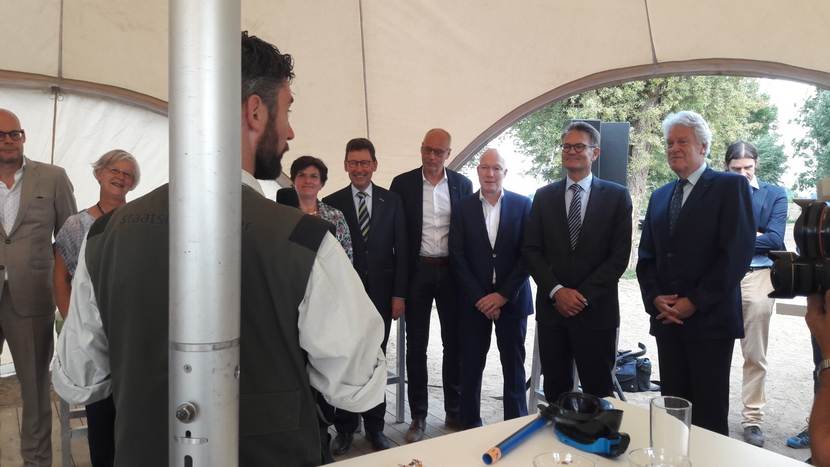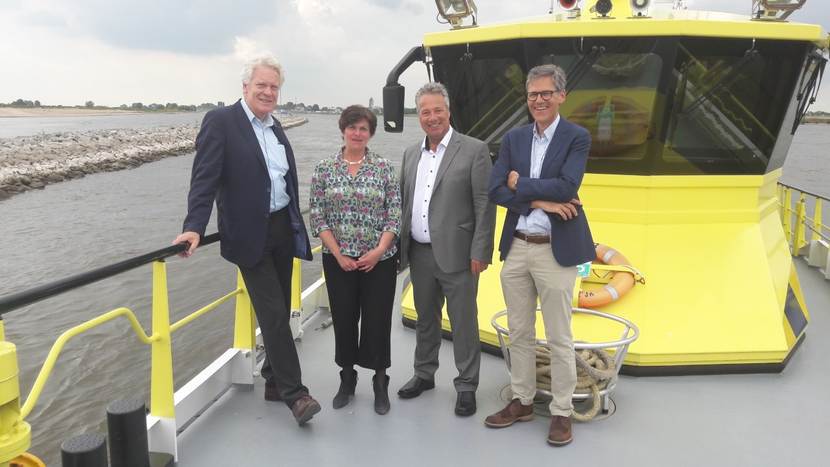Delta Programme Commissioner visits Millingerwaard and longitudinal erosion control dams
On Wednesday, 31 May Delta Programme Commissioner Wim Kuijken visited two outstanding projects in the Netherlands. In the morning, he spoke at the festive opening of the Millingerwaard project, in which Minister for Agriculture Martijn van Dam cut a large dam in a secondary channel of the River Waal. In the afternoon, he was taken on a boat tour along the innovative longitudinal erosion control dams between Ophemert and Wamel.

This day marked an important milestone in both flood risk management of the River Waal and Nature development in the Millingerwaard area. In close collaboration, Rijkswaterstaat, Staatsbosbeheer, and the Province of Gelderland have combined taskings such as flood risk management and climate change with developing a beautiful natural environment in which wildlife such as wild horses, beavers, and white-tailed eagles can find a permanent habitat. In the very near future, the clear river water will even witness snorkelling trips.
In addition to the Delta Programme Commissioner and the Minister for Agriculture, the ceremony was also attended by Member of the Gelderland Provincial Executive Josan Meijers, Mayor Mark Slinkman of Berg en Dal, the Chief Engineer-Director of Rijkswaterstaat for the Eastern Netherlands Nelly Kalfs, and Director of Staatsbosbeheer Sylvo Thijsen. Unfortunately, Prof. Pieter van Vollenhoven could not be present on account of his health.

After his visit to the Millingerwaard, the Delta Programme Commissioner continued on to Tiel, where he and Nelly Kalfs were welcomed by project leader Henk Eerden. A Rijkswaterstaat boat enabled them to take a close-up look at the 10-kilometre stretch of longitudinal erosion control dams. The Delta Programme Commissioner praised the integrated approach adopted in this simple solution. The construction of the longitudinal dams reduces the decline in the water level in the channel and the drop in the ground water level during low discharges, reduces the flow resistance and thus the high water levels, and fosters the recovery of Nature for many species of fish and birds. Furthermore, it is a peaceful boating route. The first results are positive. A final assessment will be conducted in 2020 and when successful, this approach can also be implemented on other river stretches along the Rhine and Meuse.